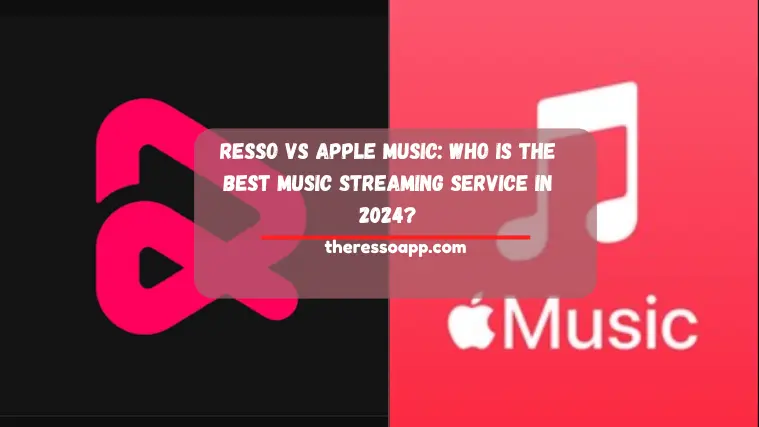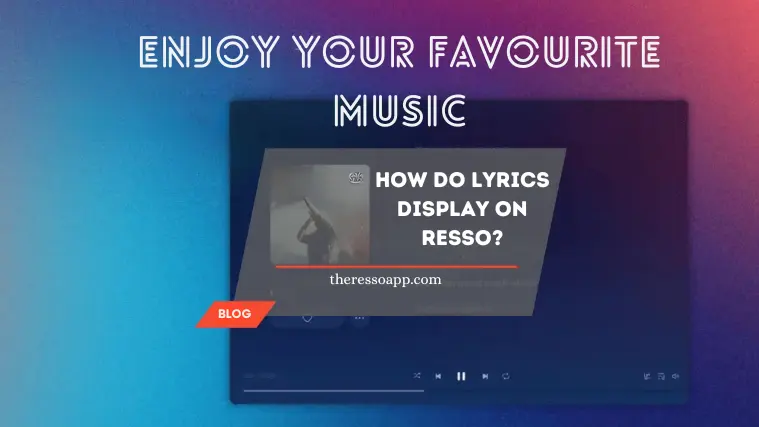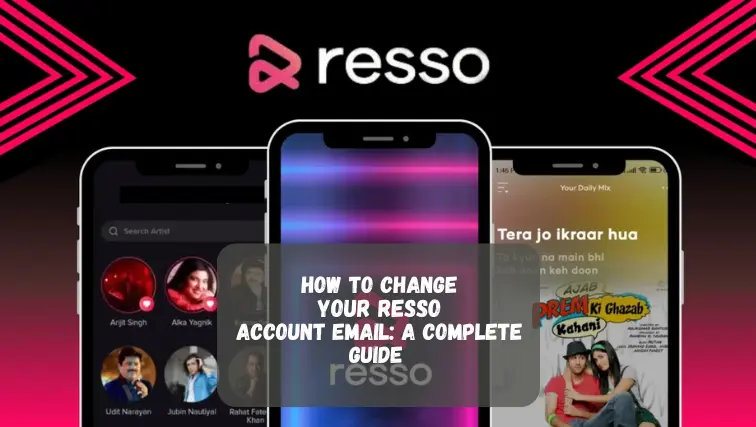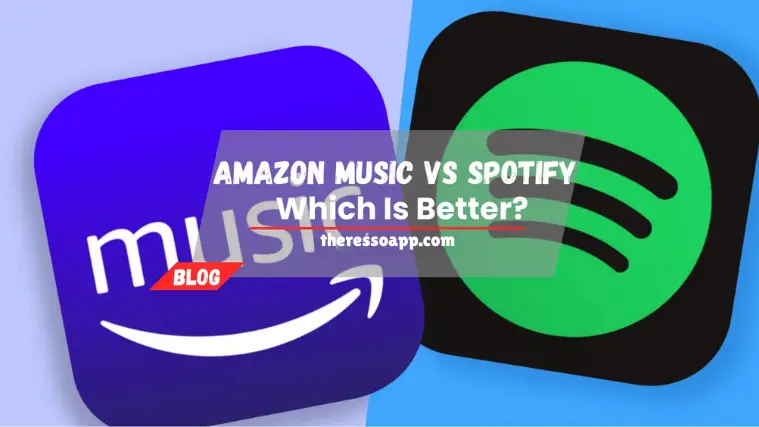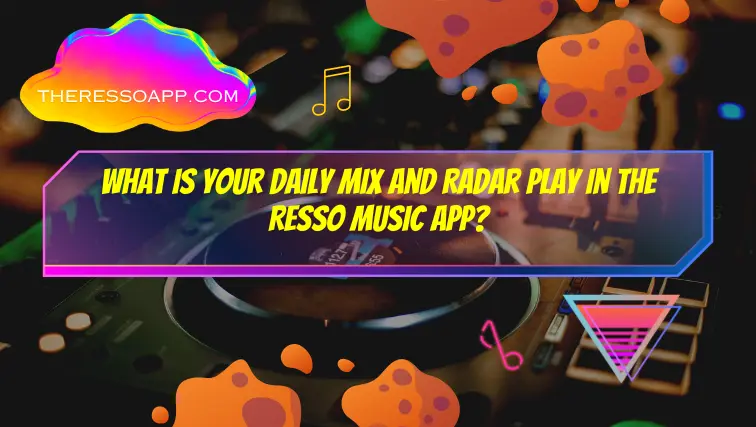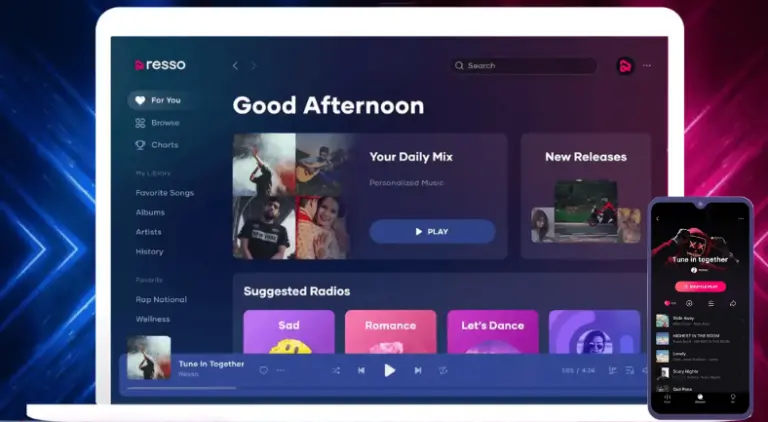Tidal VS Spotify: Who is the best Music Streaming Service in 2024?
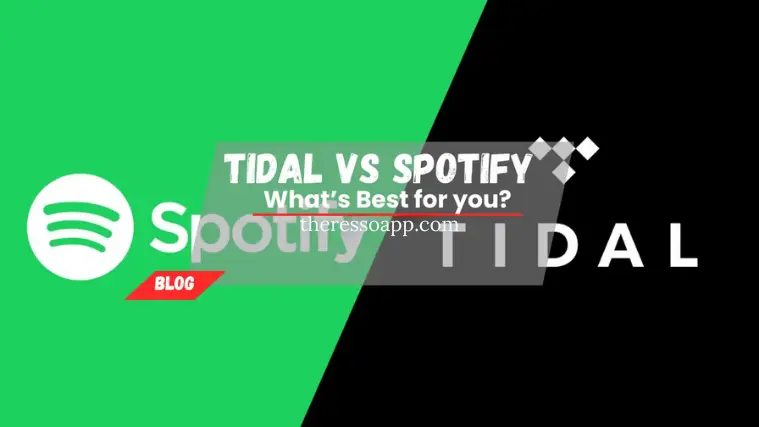
We continually review several options to help you pick the best music streaming service based on your listening preferences. Our previous analysis compared Spotify vs Resso and Amazon Music vs. Spotify. We will go on a brand-new sound journey in which Spotify and Tidal will contest.
If you’re a Spotify user, this competition is tailor-made for you. With the number of Spotify users on the decline, we’re here to explore the benefits of the alternative streaming service Tidal. Could it be a better fit for you? Let’s find out together.
This article aims to help you choose the best music streaming service for your needs by comparing and contrasting two well-known options: Tidal and Spotify. To help you make an informed choice, we’ll examine their music libraries, social features, pricing structures, and more.
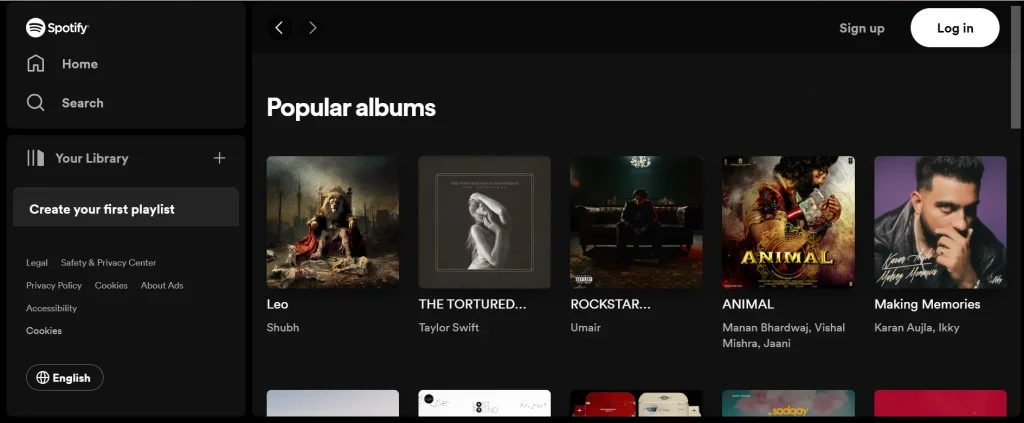
The most important differences and similarities between Tidal and Spotify are shown in the following chart, making it easy for you to decide which service might better fit your needs.
| Features | Tidal | Spotify |
| Subscribers | Five million+ | 500 million + |
| Sound Quality | High-fidelity & Master Quality | Standard (up to 320 kbps) |
| User Interface | Clean, slightly more complex | Intuitive & user-friendly |
| Exclusive Content | Exclusive releases and videos | exclusive podcasts &releases |
| Library Size | 100+ million tracks | 100+ million tracks |
| Device Compatibility | Wide range of devices including HiFi systems | A wide range of devices |
| Social Features | Limited | Good |
| Tidal | Spotify |
| This music streaming service was launched by Jay-Z in 2015. | It was launched in 2006 in Sweden, and this music streaming service has become one of the most well-known globally. |
| It offers a similar number of songs to the likes of Spotify and Apple Music, but the emphasis is on the highest audio quality. | Its features for creating custom playlists and finding new music make it the most popular. |
| The key feature of it is how it pays to its artists. It is a higher-paying service for musicians. | It seeks to make an extensive music library, podcasts, and other audio content accessible to consumers. |
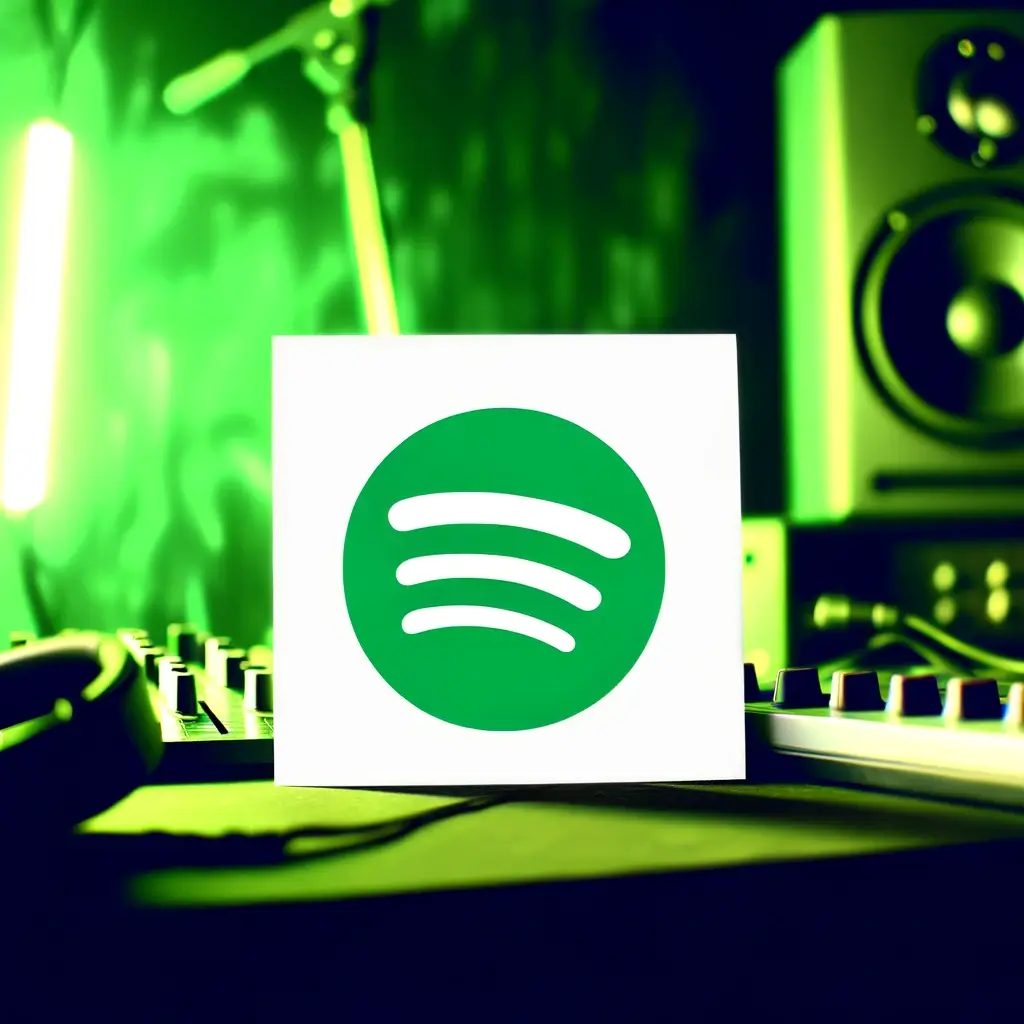
Here are the following key features of both the Tidal and Spotify music streaming apps:
Tidal VS Spotify: Pricing
| Pricing Plan | Tidal | Spotify |
| Premium Individual | $9.99 per month | $9.99 per month |
| Premium Duo | N/A | $14.99 per month (2 users) |
| Premium Family | $14.99 p/m (six accounts, HiFi); $29.99 (six accounts, HiFi Plus) | $16.99 per month |
| Premium Student | $4.99 p/m (HiFi); $9.99 p/m (HiFi Plus) | $5.99 per month |
| Annual Plan | N/A | $99 per year with a gift card |
| Offline Mode, No Ads | $9.99 p/m (HiFi); $19.99 p/m (HiFi Plus) | $10.99 p/m |
Tidal is better if you value excellent audio quality and are prepared to spend a little extra. Spotify is the best choice if you’d rather spend less money and have access to a large podcast library and excellent music discovery.
Tidal VS Spotify: Large Music Library
This might be the hardest category to succeed in. As of April 2024, Tidal promises to have 650,000 videos and a 110 million-track collection. According to Spotify, it has more than 100 million songs, 350,000 audiobooks, and 5 million podcasts.
Finding variety in music can also be difficult. Tidal’s selection of music favours rap and hip-hop musicians, particularly those relatively new and undiscovered. This is consistent with Tidal’s original ownership structure, primarily made up of well-known performers like Jay-Z who were eager to support up-and-coming artists. That view might be shifting now that Block—formerly Square—owns Tidal.
Spotify, on the other hand, has a more diverse selection. However, this could result from the service’s algorithmic adaptation to users’ indicated musical preferences. Certain musicians have deliberately declined to allow Spotify to play their music due to worries about insufficient earnings.
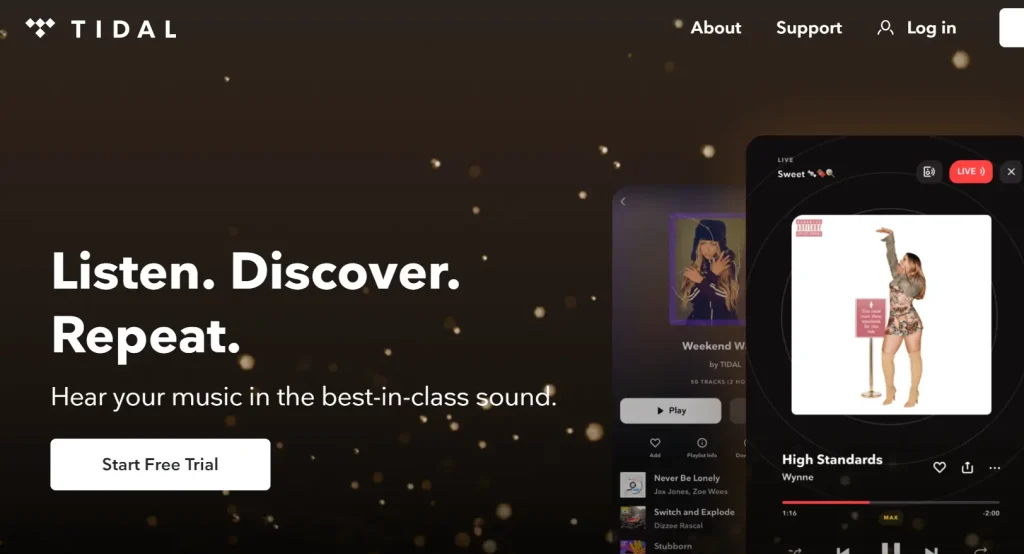
Tidal VS Spotify: Sound Quality
Tidal offers lossless, CD-quality streaming, while Spotify provides lower 320kbps streaming quality. However, this could change if Spotify releases its long-awaited high-res audio feature, rumoured under Superpremium and Hi-Fi.
For now, Tidal leads in sound quality. However, to fully enjoy Tidal’s high-bandwidth streaming, you’ll need a suitable device and sometimes a digital-to-analog converter (DAC). While Tidal’s CD-quality streams work on most devices, mobile users should note that these streams use more data than standard music, so adjust your settings if data consumption is a concern.
Tidal supports several codecs, including FLAC, MQA, Sony 360 Reality Audio, and Dolby Atmos Music. Using a DAC or other external equipment is recommended to get the best sound quality from formats like FLAC and MQA. Here’s a useful list of compatible devices for MQA.
Tidal VS Spotify: Availability
Both businesses have been attempting to expand their availability across as many platforms as possible, including other linked wearables, several smartwatches, and the newest Sony and Microsoft gaming consoles. Additionally, its app appears on a variety of smart TV interfaces.
Tidal is also available on a wide range of televisions; it is a standard feature of the Android TV interface. It may be connected to your Sonos system and is accessible on iOS—naturally, both Spotify and Tidal support Google Chromecast and Apple AirPlay.
One little but helpful distinction is Spotify’s “Car Thing,” a tiny touchscreen gadget that allows for reliable and safe streaming when you’re behind the wheel. Tidal will just have to settle for Apple CarPlay connectivity. However, it has recently lost the benefit it had for a while with “Spotify Connect,” which lets paying users stream straight to devices connected to the same network.
Tidal VS Spotify: Interface
Those who enjoy simplicity and casual listening may find Spotify’s more user-friendly layout excellent, but Tidal appeals to customers who value elegance and in-depth musical details since it provides a visually rich interface with detailed music information. With Tidal’s carefully chosen selections and Spotify’s customised playlists, both services shine in this area.
Tidal’s UI appeals to customers who value visual appeal, in-depth music information, and high-resolution audio experiences. In contrast, Spotify’s interface best suits simple use and mainstream music discovery. Your tastes could influence audio quality, music discovery, and interface design decisions.

Tidal VS Spotify: Supported devices
Apps on Tidal support every major platform, including Windows, MacOS, iOS, TVOS, Android, and Android TV. It also supports certain very high-end streaming components from manufacturers like Astell & Kern, Devialet, Denon, Harman Kardon, KEF, Martin Logan, and Meridian, to name a few, with an emphasis on the audiophile community.
Its compatibility with more mainstream devices, such as game consoles and the Roku platform, is entirely lacking. Users might need to create a Plex account to watch Tidal content on specific devices.
Not only does Spotify support all major platforms, but it also has very few linked audio devices, which does not help. Spotify may have any music streaming service’s most extraordinary device support, including smartwatches, smart speakers, and even some of Tidal’s high-end brands.
Tidal VS Spotify: Social Media
To put it clearly, Spotify has become preoccupied with this. You can make links to share playlists and other content on almost any messaging app and share Spotify content on Facebook and Instagram. It’s not social media if it can’t join Spotify.
With the Tidal desktop software, you can simply browse through the feeds of your favourite artists and check their social media channels directly. You can also effortlessly connect your Facebook and Twitter accounts.
Tidal VS Spotify: Personalization and Discoverability
Spotify’s music recommendation tool, which creates playlists based on users’ listening preferences using AI and machine learning, is its USP. With playlists like My Daily Discovery, My Mix(es), and My New Arrivals powered by artificial intelligence.
Tidal’s music discovery services are getting better. Tidal Rising features playlists featuring new releases across a variety of genres and promotes up-and-coming artists. The diversity of Spotify’s Home interface has increased since it initially favoured hip-hop and rap.
Tidal VS Spotify: Artist Remuneration
It may be a surprise to hear that Tidal beats Spotify in this regard, as one of its guiding principles is to provide more favourable deals to the artists whose works it promotes.
Spotify does not receive a fixed payment for every song streamed. Rather, it determines a “stream share” by adding together all the monthly streams and estimating the percentage of them that were for a certain song or artist.
If you have a Tidal HiFi Plus subscription, you can find satisfaction because your favourite artists split nearly 10% of your monthly cost. Additionally, effective this year, the artists you stream the most will receive payment based on your viewing preferences.
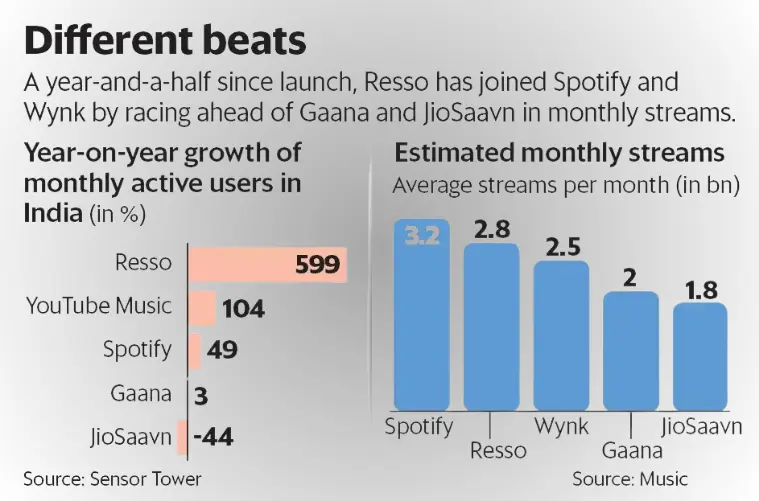
Your tastes and priorities will majorly determine which of Tidal and Spotify is the better match for you. Tidal provides outstanding sound quality along with exclusive content. It has a more visually appealing interface and provides musicians with more direct support. But because it costs more and has a little more complicated user interface, it’s an attractive choice for someone looking for a unique listening experience.
Conversely, Spotify shines in terms of user-friendliness, wide device compatibility, and strong social features. It’s perfect for casual listeners who enjoy discovering new music and curating custom playlists because of its user-friendly interface and excellent music discovery algorithms. Ultimately, Tidal is superior if you value superb audio quality and unique artist material. But if you value social connectivity, price, and music discovery more, Spotify is still the top choice.
FAQS
Which is louder, Spotify or Tidal?
Loudness normalisation is used by both streaming services, therefore the difference in volume between the two shouldn’t be noticeable when playing music.
Is it possible to use Spotify’s lyrics to find songs?
Indeed, Spotify just introduced the ability to search for a song using its lyrics, and the music will probably appear. If the artist had not uploaded and linked the lyrics to their music, that would be why it wouldn’t appear.
Is there any particular gear I need to enjoy TIDAL Hi-Fi?
You must have a connected connection to listen to lossless audio because Bluetooth headphones tamper with the transmission. Moreover, we suggest using a studio headphones set to discern the extra detail in recordings. Check out our comprehensive FLAC file explainer to learn more about lossless audio. Another option is to take a blind lossless audio test to check how well you can distinguish between lossy and lossless audio.
Is it easy for me to switch between Spotify and Tidal?
Yes, you can switch between Spotify and Tidal. Many consumers test out both services during their free trials to find their preferred option.
Can I use Spotify or Tidal offline?
Yes, both Tidal VS Spotify allow for offline listening; however, Tidal offers higher-quality downloads in its offline mode.
Which streaming service offers a greater selection of songs?
With more than 100 million songs, Spotify has one of the biggest music libraries, making it a haven for music lovers.

